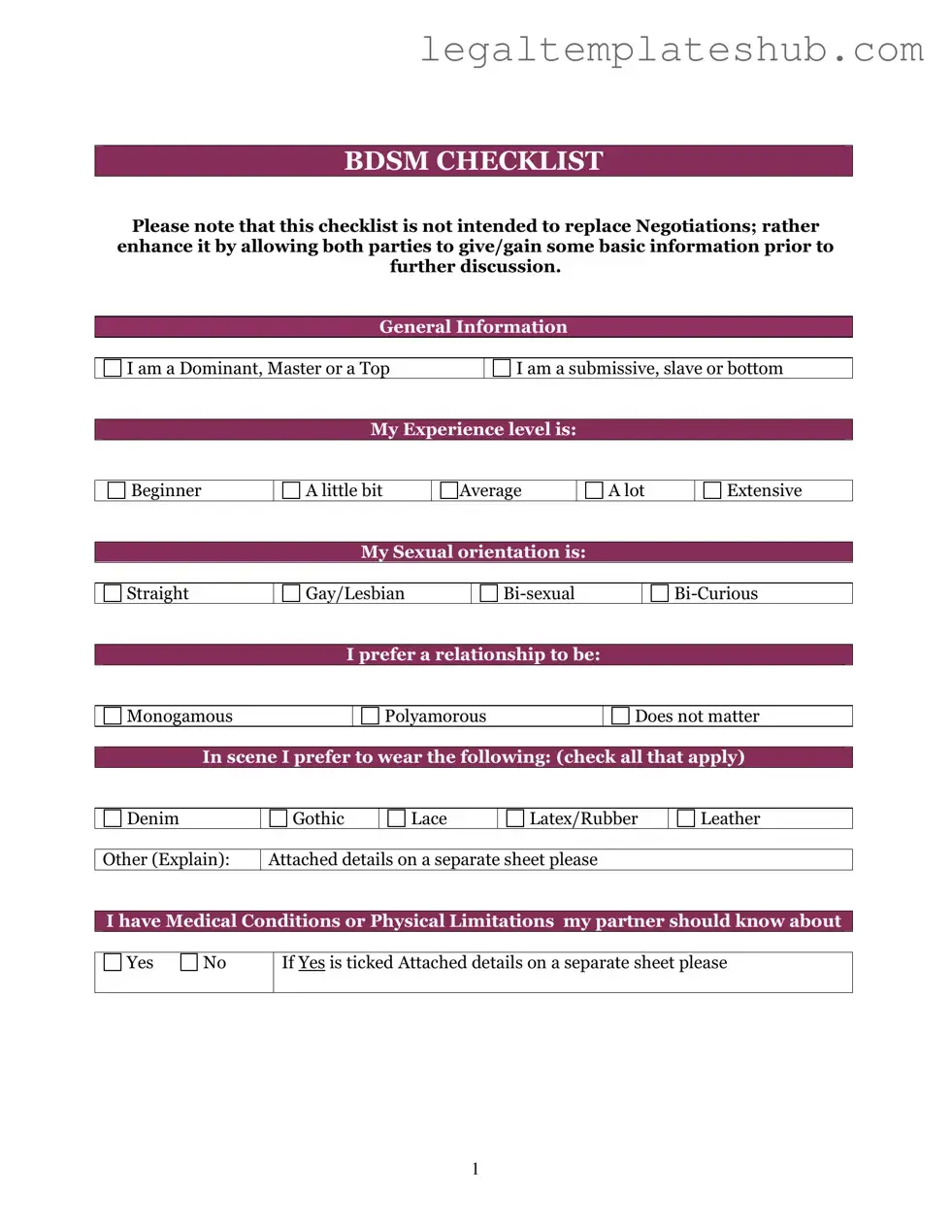Blank Bdsm Checklist PDF Form
The BDSM Checklist form is a valuable tool designed to help individuals and partners communicate their interests, limits, and desires within the BDSM community. By using this checklist, you can explore various activities and establish boundaries, ensuring a safe and consensual experience. Take the first step in enhancing your understanding of preferences by filling out the form below.
Access Editor
